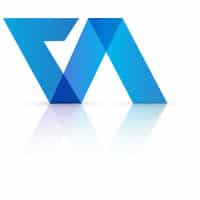Understanding Customer Acquisition Cost (CAC): A Comprehensive Guide for Startups
Customer Acquisition Cost (CAC) is a crucial metric for startups to track and optimize its a very important metric in valuation of startup. It measures the average cost to acquire a new customer and plays a significant role in evaluating the efficiency of marketing and sales efforts. In this comprehensive guide, we will dive deep into CAC, its importance, calculation methods, and strategies for optimizing it. Let’s get started!
Table of Contents
- Importance of Customer Acquisition Cost
- Calculating Customer Acquisition Cost
- CAC Benchmarks and Industry Averages
- Strategies for Optimizing Customer Acquisition Cost
- CAC and Customer Lifetime Value (LTV)
- Challenges in Calculating and Optimizing CAC
- Frequently Asked Questions (FAQs)
- Conclusion

1. Importance of Customer Acquisition Cost
Customer Acquisition Cost is a vital metric for startups for several reasons:
- Efficiency: CAC helps determine the efficiency of marketing and sales efforts. A lower CAC indicates that your startup is acquiring customers more cost-effectively, allowing for better allocation of resources.
- Profitability: Understanding CAC is crucial for assessing profitability. If CAC is higher than the lifetime value of a customer (LTV), your startup may struggle to become profitable in the long run.
- Growth: Monitoring CAC can help identify growth opportunities and potential bottlenecks, enabling startups to scale more effectively.
- Investor appeal: Investors pay close attention to CAC, as it can be an indicator of a startup’s potential for success and profitability.
2. Calculating Customer Acquisition Cost
Calculating CAC is relatively straightforward. The formula is as follows:
Customer Acquisition Cost (CAC) = Total Marketing and Sales Costs / Number of New Customers Acquired
Here, the total marketing and sales costs should include all expenses associated with acquiring new customers, such as advertising, promotions, sales team salaries, and any other related costs. The number of new customers acquired should be measured over a specific period, such as a month or a quarter.
Example:
Suppose a startup spends Rs 10,000 on marketing and sales efforts in a month and acquires 100 new customers. The CAC would be:
CAC = Rs 10,000 / 100 = Rs 100
This means that the startup spends, on average, Rs 100 to acquire each new customer.
3. CAC Benchmarks and Industry Averages
It’s essential to compare your startup’s CAC to industry benchmarks to understand how effectively you’re acquiring customers. CAC can vary significantly depending on factors such as the industry, target audience, and business model. Some industries, such as software-as-a-service (SaaS) or e-commerce, may have a lower CAC due to their digital nature, while industries like finance or healthcare might have higher CACs due to increased regulatory requirements and competition.
To gain a deeper understanding of your startup’s performance, research industry-specific CAC benchmarks and compare them to your figures. If your CAC is significantly higher than the industry average, it may be time to reevaluate your marketing and sales strategies.
4. Strategies for Optimizing Customer Acquisition Cost
Reducing CAC is critical for improving profitability and growth. Here are some strategies to help optimize your Customer Acquisition Cost:
- Targeting: Refine your target audience to focus on high-value customers who are more likely to convert and generate higher lifetime value (LTV).
- Conversion optimization: Optimize your website, landing pages, and sales funnel to improve conversion rates and lower CAC.
- Content marketing: Create valuable content that attracts and engages your target audience, driving organic traffic and reducing reliance on paid advertising.
- Referral programs: Implement referral programs to incentivize existing customers to refer new customers, reducing acquisition costs.
- Retention: Focus on retaining and upselling existing customers, as it’s generally more cost-effective than acquiring new customers.
5. CAC and Customer Lifetime Value (LTV)
Customer Lifetime Value (LTV) is another critical metric for startups. LTV represents the total revenue a customer generates for your business over their entire lifetime as a customer. Comparing CAC to LTV can provide valuable insights into the long-term profitability of your customer acquisition efforts.
Ideally, your LTV should be significantly higher than your CAC. A commonly used benchmark is that the LTV:CAC ratio should be at least 3:1. This means that the lifetime value of a customer should be at least three times the cost of acquiring them. If your LTV is too close to or lower than your CAC, you may need to reevaluate your marketing strategies, pricing, or customer retention efforts.
6. Challenges in Calculating and Optimizing CAC
While CAC is a valuable metric, there are some challenges in calculating and optimizing it:
- Attribution: Accurately attributing marketing and sales costs to specific customers can be difficult, especially when using multiple marketing channels.
- Timeframe: The timeframe used for calculating CAC can significantly impact the result, as marketing and sales expenses may fluctuate over time.
- Long sales cycles: For startups with long sales cycles, the time lag between marketing spend and customer acquisition can make CAC calculations less accurate.
7. Frequently Asked Questions (FAQs)
- How often should I calculate CAC?It’s generally recommended to calculate CAC on a monthly or quarterly basis, depending on your business model and the stability of your marketing and sales expenses.
- Is a lower CAC always better?While a lower CAC is generally preferable, it’s essential to consider the balance between CAC and LTV. Reducing CAC too aggressively may lead to lower customer quality, negatively impacting LTV and overall profitability. It’s crucial to find an optimal balance between acquisition costs and customer value.
- How can I improve my CAC:LTV ratio?To improve the CAC:LTV ratio, you can focus on optimizing CAC through targeting, conversion optimization, and referral programs, while also working to increase LTV through improved customer retention, upselling, and cross-selling strategies.
8. Conclusion
Understanding and optimizing Customer Acquisition Cost is critical for startups to ensure efficient marketing and sales efforts, profitability, and growth. By calculating CAC, comparing it to industry benchmarks, and implementing strategies to optimize it, startups can build a strong foundation for long-term success. Keep in mind that balancing CAC with Customer Lifetime Value is essential for maintaining a healthy and sustainable business model.
